Monthly Archives: November 2020

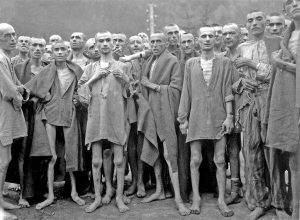 I read an article recently, that I can’t get out of my head. “A Study Finds 66% Of US Millennials Can’t Identify What Auschwitz Is” talks about the movement to remove certain elements from world history. The picture of Auschwitz is as foreign to kids these days as the idea of “The Final Solution” was prior to Hitler’s reign of terror in Germany and parts of Europe which led to the Holocaust. The thing that shocks me most is that when they were asked, after a tour of Auschwitz, which is located in Poland, why they didn’t tear these horrible buildings down, they responded, “Oh no!! We leave them up so that we will never forget what happened here, and never allow it to happen again.” Wise words, and words that more people would do well to remember today.
I read an article recently, that I can’t get out of my head. “A Study Finds 66% Of US Millennials Can’t Identify What Auschwitz Is” talks about the movement to remove certain elements from world history. The picture of Auschwitz is as foreign to kids these days as the idea of “The Final Solution” was prior to Hitler’s reign of terror in Germany and parts of Europe which led to the Holocaust. The thing that shocks me most is that when they were asked, after a tour of Auschwitz, which is located in Poland, why they didn’t tear these horrible buildings down, they responded, “Oh no!! We leave them up so that we will never forget what happened here, and never allow it to happen again.” Wise words, and words that more people would do well to remember today.
During the past year, we have seen unrest, protests, riots, and the “cancel culture” that has become almost the norm of our time. The schools don’t teach parts of history anymore, in an act of Historical Negationism or denialism. This is not about revising history based on new information that would correct history. Usually, the purpose of historical negation is to achieve a national, political aim, by transferring war-guilt, demonizing an enemy, providing an illusion of victory, or preserving a friendship. Sometimes the purpose of a revised history is to sell more books or to attract attention with a newspaper headline. The historian James M. McPherson said that negationists would want revisionist history understood as, “a consciously-falsified or distorted interpretation of the past to serve partisan or ideological purposes in the present” All of that sounds an awful lot like what we have going on today.
Couple Historical Negationism with “taking offence” or “political correctness” and you have a recipe for disaster. In many of the riots of recent days, the rioters have torn down our historical statues. To me, it doesn’t matter if they think the statue portrays someone they find offensive, or not. That person is a pert of history, good, bad, or ugly. A hero of the South, might not be a hero of the North, but to those in the South he or she might have been. Was a war hero from Germany any less a war hero to his countrymen, simply because he was forced to fight on the side of the Nazis? I don’t think so. In fact many of the German soldiers had no idea of what was happening in their own country. I’m not standing up for the rightness, nor against the wrongness of the people 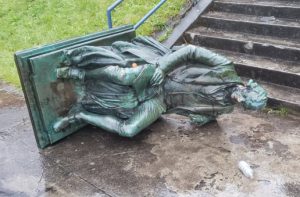
 portrayed in the statues, but rather against the destruction of property. The buildings destroyed in the riots, the statues destroyed by the mobs, the looting that took place, all deemed “okay” because these places had insurance…does not make these vicious acts acceptable, or their perpetrators blameless. It’s time that we teach our children about patriotism, respect, fairness, and decency. If we don’t, we are going to find ourselves in the middle of a country that is destroyed by violence and hate. Wake up America!!
portrayed in the statues, but rather against the destruction of property. The buildings destroyed in the riots, the statues destroyed by the mobs, the looting that took place, all deemed “okay” because these places had insurance…does not make these vicious acts acceptable, or their perpetrators blameless. It’s time that we teach our children about patriotism, respect, fairness, and decency. If we don’t, we are going to find ourselves in the middle of a country that is destroyed by violence and hate. Wake up America!!
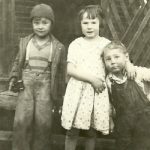
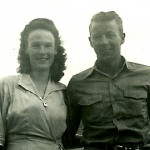 My husband’s aunt, Marion Kanta was his dad, Walt Schulenberg’s older sister. It was just the two kids for the first 13 years of her life, and the first 11 years of his life. For much of his early life, Aunt Marion, like many older sisters, was the bossy one. She tried to make sure her little brother did all the things he was supposed to do…or at least, all the things she told him to do. As little brothers would tell you, that bossy big sister thing didn’t really go over very well. Nevertheless, while they did fight sometimes, he did love her. Don’t let that make you think that he never hit his big sister. It’s a sibling thing after all, but boys had to be taught to treat girls like ladies, and so hitting his big sister didn’t go over well with their mother, Vina. So, as time went on, Walt learned to be a nice boy, and not hit his sister.
My husband’s aunt, Marion Kanta was his dad, Walt Schulenberg’s older sister. It was just the two kids for the first 13 years of her life, and the first 11 years of his life. For much of his early life, Aunt Marion, like many older sisters, was the bossy one. She tried to make sure her little brother did all the things he was supposed to do…or at least, all the things she told him to do. As little brothers would tell you, that bossy big sister thing didn’t really go over very well. Nevertheless, while they did fight sometimes, he did love her. Don’t let that make you think that he never hit his big sister. It’s a sibling thing after all, but boys had to be taught to treat girls like ladies, and so hitting his big sister didn’t go over well with their mother, Vina. So, as time went on, Walt learned to be a nice boy, and not hit his sister.
Of course, as they grew up, all that childish squabbling was behind them, and they became good friends, even though they lived in two different states. Aunt Marion, her husband and 8 children lived in Helena, Montana; and Walt, his wife and 6 children lived in Casper, Wyoming. The families got together as often as they could, but it really was pretty much a couple of times a year. That is often the case when families live so far apart. 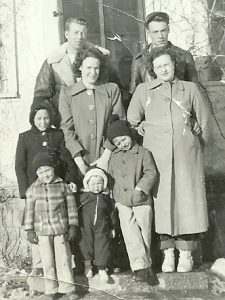
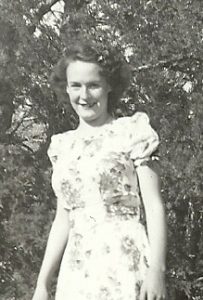 Nevertheless, it doesn’t diminish the love between siblings.
Nevertheless, it doesn’t diminish the love between siblings.
I remember that whenever we would go to Forsyth, Montana to visit Grandma Hein, Aunt Marion would often come over from Helena for a visit. We enjoyed those visits so much. She was always such a sweet person. There wasn’t even a hint of that bossiness that she was famous for in her youth. I’m not sure her kids would agree, but then it is a mom’s job to be bossy, right. Aunt Marion left us far too soon, when a developed a blood disease in 1999. She was only 72 years old and she was still a very healthy woman in every other way. Today would have been Aunt Marion’s 93rd birthday. Happy birthday in Heaven, Aunt Marion. We love and miss you very much.
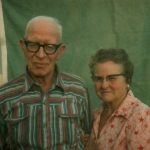
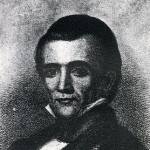 My husband’s grandfather, Robert Knox came from a long line of political figures, but he was not a political man. The ancestors who were political were pretty far in the past. There were also some military connections, which he probably never knew about, other than his own family members who served, like his brother Frank Knox. Grandpa’s life fell between wars, so he was not called to serve in the military.
My husband’s grandfather, Robert Knox came from a long line of political figures, but he was not a political man. The ancestors who were political were pretty far in the past. There were also some military connections, which he probably never knew about, other than his own family members who served, like his brother Frank Knox. Grandpa’s life fell between wars, so he was not called to serve in the military.
Truth be told, Grandpa was more of a farmer/rancher type. It was where he felt most at home. I will never forget the early years of my marriage to Bob, when Grandpa would spend hours in the family garden growing tons of vegetables, which the women in the family would can to supply vegetables for the coming year. It made Grandpa feel useful in his retirement years.
I think that one of Grandpa’s greatest joys, however, was the day when his great granddaughter, Machelle Cook Moore was born…on his birthday. It gave them a bond much like the one Grandma Knox had with their first great granddaughter, Corrie Schulenberg Petersen, who was born on Grandma’s birthday. I suppose that 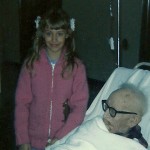
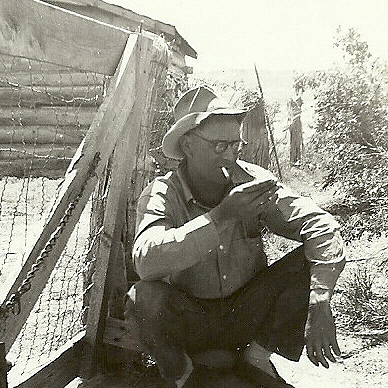 continued the Grandma first teasing that had gone on their entire marriage, because Grandma was six months older than Grandpa was, and she enjoyed teasing him. And I’m sure he enjoyed it too over the years, but this idea of having a granddaughter born on his birthday…that was cool.
continued the Grandma first teasing that had gone on their entire marriage, because Grandma was six months older than Grandpa was, and she enjoyed teasing him. And I’m sure he enjoyed it too over the years, but this idea of having a granddaughter born on his birthday…that was cool.
Grandpa left us in 1985, and we still miss him and Grandma. Today would have been his 112th birthday. Happy birthday in Heaven, Grandpa. I know you and all the family who have gone one before are having a great time. We love and miss you very much.

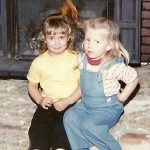 My niece, Machelle Moore is just six months younger than my youngest daughter, Amy Royce. As young girls, they couldn’t really decide if they were friends or enemies, of course that all ended by the time they were about two years old. From that time on, they were friends. Before that, I think it was mostly a sharing problem…their toys, that is. Most kids that age don’t really like to share their toys, so it really wasn’t anything that unusual, and these two girls were both a bit stubborn. One thing I’ve learned in my lifetime is that stubborn people often make the best friends. While they might have disagreements, they never give up on things, and two things they never give up on are friends and marriage. So to this day, both girls are good friends, and both have enjoyed a long marriage with their spouses. While they live a long way away from each other now, they will always be close as cousins.
My niece, Machelle Moore is just six months younger than my youngest daughter, Amy Royce. As young girls, they couldn’t really decide if they were friends or enemies, of course that all ended by the time they were about two years old. From that time on, they were friends. Before that, I think it was mostly a sharing problem…their toys, that is. Most kids that age don’t really like to share their toys, so it really wasn’t anything that unusual, and these two girls were both a bit stubborn. One thing I’ve learned in my lifetime is that stubborn people often make the best friends. While they might have disagreements, they never give up on things, and two things they never give up on are friends and marriage. So to this day, both girls are good friends, and both have enjoyed a long marriage with their spouses. While they live a long way away from each other now, they will always be close as cousins.
Machelle is married to Steve Moore, and they have two sons. They love camping in the Big Horn Mountains, which is near their home in Powell, Wyoming. In the summer they go camping as much as possible, although these days their boys can’t always go along…at least, not Weston, their oldest, who works. Easton usually goes, but that will probably change as he gets older too. Machelle and her husband, Steve love to be in the great outdoors. The love rock hunting, and looking for artifacts. They could walk the hillsides for hours in their search for the perfect stones. I think I could easily see them with a mining claim where they looked for gemstones. I’m sure they could make so beautiful things out of all the great stones they have found.
These days, Machelle is into all things health. She is doing her own studies on vitamins, immune systems, and healthy eating. I guess we are all trying to make our way through all the health issues of the current pandemic 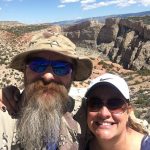
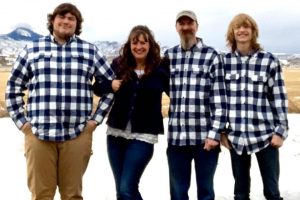 and the truth is that we have to all work out our own health as we see fit. We all have different ideas on masks, social distancing, closures, and safety. We can only share what we have learned, and let everyone make their own choices. That’s all any of us are asking. The freedom to choose for ourselves. Machelle is a strong woman, who follows her heart, and I think she has chosen well for her life. Today is Machelle’s birthday. Happy birthday Machelle!! Have a great day!! We love you!!
and the truth is that we have to all work out our own health as we see fit. We all have different ideas on masks, social distancing, closures, and safety. We can only share what we have learned, and let everyone make their own choices. That’s all any of us are asking. The freedom to choose for ourselves. Machelle is a strong woman, who follows her heart, and I think she has chosen well for her life. Today is Machelle’s birthday. Happy birthday Machelle!! Have a great day!! We love you!!
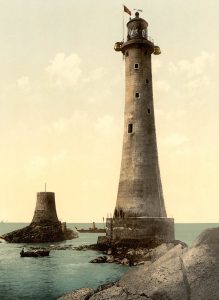 These days, we have advance warnings about potentially dangerous storms heading our way. Of course, the meteorologists aren’t always right on with their predictions, but often they are incredibly accurate. In centuries gone by, it was often the elder men, the ones who had been around a while, who had watched the sky, to see the signs that would give them clues as to coming weather. Unfortunately, on November 14, 1703, any clues they might have seen would not do any good for the people of England. The unusual weather began that day with strong winds from the Atlantic Ocean that battered the southern part of Britain and Wales. The pounding winds damaged many homes and other buildings, but the hurricane-like storm only began doing serious damage on November 26. Then the winds estimated at over 80 miles per hour, blew bricks from some buildings and embedded them in others. Wood beams, separated from buildings, flew through the air and killed hundreds across the south of the country. Towns such as Plymouth, Hull, Cowes, Portsmouth, and Bristol were devastated.
These days, we have advance warnings about potentially dangerous storms heading our way. Of course, the meteorologists aren’t always right on with their predictions, but often they are incredibly accurate. In centuries gone by, it was often the elder men, the ones who had been around a while, who had watched the sky, to see the signs that would give them clues as to coming weather. Unfortunately, on November 14, 1703, any clues they might have seen would not do any good for the people of England. The unusual weather began that day with strong winds from the Atlantic Ocean that battered the southern part of Britain and Wales. The pounding winds damaged many homes and other buildings, but the hurricane-like storm only began doing serious damage on November 26. Then the winds estimated at over 80 miles per hour, blew bricks from some buildings and embedded them in others. Wood beams, separated from buildings, flew through the air and killed hundreds across the south of the country. Towns such as Plymouth, Hull, Cowes, Portsmouth, and Bristol were devastated.
Finally, on November 27, 1703, the storm system finally dissipated over England. For almost two weeks, it had ripped the country nearly to shreds. With its hurricane force winds, the storm killed somewhere between 10,000 and 30,000 people. Hundreds of Royal Navy ships were lost to the storm, the worst in Britain’s history. It was the loss of the 300 Royal Navy ships that really caused the death toll to rise. The ships that were anchored carried some 8,000 sailors. All were lost. Then, the Eddystone Lighthouse, which had been built on a 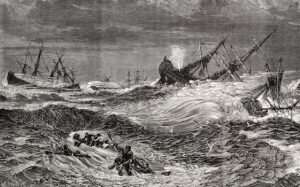 rock outcropping 14 miles from Plymouth, was blown over by the storm. All of its residents, including its designer, Henry Winstanley, were killed. Huge waves on the Thames River sent water six feet higher than ever before recorded near London. More than 5,000 homes along the river were destroyed.
rock outcropping 14 miles from Plymouth, was blown over by the storm. All of its residents, including its designer, Henry Winstanley, were killed. Huge waves on the Thames River sent water six feet higher than ever before recorded near London. More than 5,000 homes along the river were destroyed.
The author Daniel Defoe, witnessed the storm, and it had such an impact on him that he wrote his first book, entitled “The Storm” the following year. In “The Storm” he described the storm as an “Army of Terror in its furious March.” Sometimes the best inspiration for writing a book is the events of real life. Defoe would later go on to write the well known novel “Robinson Crusoe.”

 Let’s face it…2020, doesn’t seem to have a lot in it to be thankful for. It has been a tough year in many ways. With Covid-19, quarantines, lock downs, job losses, business losses, election struggles, riots, protests, and homeschooling…by choice or not, things looked pretty grim. Many people have lost loved ones, or friends, or friends and family of friends. Still, we have survived…those of us left, and many of us have contracted Covid-19, and still we have survived. This has been awful, and we will always miss those we have lost, but we Americans are a strong breed. We built this nation on God’s ways, and while some would disagree, that is a fact. Our forefathers came to this country to escape religious persecution, and founded this country on the principle that we should all have freedom to worship as we see fit. They knew that people would disagree on religion, but each person should have the right to choose for themselves.
Let’s face it…2020, doesn’t seem to have a lot in it to be thankful for. It has been a tough year in many ways. With Covid-19, quarantines, lock downs, job losses, business losses, election struggles, riots, protests, and homeschooling…by choice or not, things looked pretty grim. Many people have lost loved ones, or friends, or friends and family of friends. Still, we have survived…those of us left, and many of us have contracted Covid-19, and still we have survived. This has been awful, and we will always miss those we have lost, but we Americans are a strong breed. We built this nation on God’s ways, and while some would disagree, that is a fact. Our forefathers came to this country to escape religious persecution, and founded this country on the principle that we should all have freedom to worship as we see fit. They knew that people would disagree on religion, but each person should have the right to choose for themselves.
This year has tested us in so many ways, but we are Americans, and we don’t give up. We are patriots, and we 
 love God and country. As we are faced with new challenges, we have a chance to prove once again that we are fighters. We might be down right now, but we aren’t out, and we don’t quit. America is still the land where dreams come true, and it’s because we never give up. This year has been harder than any in my lifetime…maybe harder than any in the lifetimes of most of us, but we have come through it together. That is something to be thankful for, even with all the worry, loss, and fighting. Thanksgiving is a time to think back on the past year, and on our lives, and to be thankful for all we have been given.
love God and country. As we are faced with new challenges, we have a chance to prove once again that we are fighters. We might be down right now, but we aren’t out, and we don’t quit. America is still the land where dreams come true, and it’s because we never give up. This year has been harder than any in my lifetime…maybe harder than any in the lifetimes of most of us, but we have come through it together. That is something to be thankful for, even with all the worry, loss, and fighting. Thanksgiving is a time to think back on the past year, and on our lives, and to be thankful for all we have been given.
This year may have been a really hard one, but our loved ones who have gone on before us, would never want us to give up…or quit. They would want us to live on and be happy. They would want us to be thankful, and to live our lives in such a way as to make them proud. We could have given up this year, but that was never really 
 an option…now, was it? Thanksgiving is our day to celebrate this land that was founded on our love for God. So whether you are in quarantine, in a city where gathering together is only allowed in small groups, or just far away from your family, remember to take a few minutes to thank God for all we have been given. We are among the most blessed people in the world, and we need to remember that. Happy Thanksgiving everyone!! God bless you all and God bless America!!
an option…now, was it? Thanksgiving is our day to celebrate this land that was founded on our love for God. So whether you are in quarantine, in a city where gathering together is only allowed in small groups, or just far away from your family, remember to take a few minutes to thank God for all we have been given. We are among the most blessed people in the world, and we need to remember that. Happy Thanksgiving everyone!! God bless you all and God bless America!!
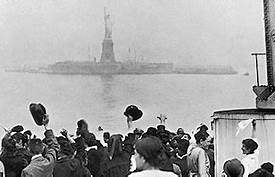 America has been the land of opportunity since its inception, and people often worked years to save enough money to pay for passage to what many considered the promised land. It wasn’t cheap, but the money for passage was just the beginning of the grueling process of becoming a citizen of the United States. They knew some of what they would face, but not all. Still, it did not deter them. For a chance at a better life, they came. Many immigrants came through Ellis Island, passing by the Statue of Liberty on their way. It was their first glimpse of what they considered the symbol of America. Then they went on to Ellis Island, where their pre-entry screening began.
America has been the land of opportunity since its inception, and people often worked years to save enough money to pay for passage to what many considered the promised land. It wasn’t cheap, but the money for passage was just the beginning of the grueling process of becoming a citizen of the United States. They knew some of what they would face, but not all. Still, it did not deter them. For a chance at a better life, they came. Many immigrants came through Ellis Island, passing by the Statue of Liberty on their way. It was their first glimpse of what they considered the symbol of America. Then they went on to Ellis Island, where their pre-entry screening began.
First, they were rigorously questioned…what we call vetting today. They asked things like: “Are you meeting a relative here in America? Who? Have you been in a prison, almshouse, or institution for care of the insane? Are you a polygamist? Are you an anarchist? Are you coming to America for a job? Where will you work? Are you 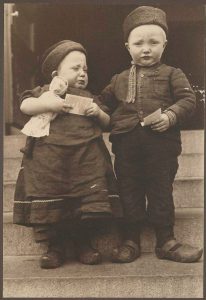 deformed or crippled? Who was the first President of America? What is the Constitution? Which President freed the slaves? Can you name the 13 original Colonies? Who is the current President of the United States?” Providing they passed this first test, they moved on to the next level. Many people these days would take offense at some of these questions…especially the health questions. What they don’t understand is that an unhealthy person or one with a disability could have been a burden to society…even more so than the problems with disabilities today. I know that sounds bad, but they couldn’t afford to take lots of people that the government was going to have to support. They also couldn’t take people with a communicable disease that could cause an epidemic in our country…something we can all understand these days. Every immigrant with a medical condition was marked on their on the shoulder of their clothing with their condition. Things like “PG” for pregnant, “B” for back problems, “SC” for scalp condition, etc. That way, every station down the line knew the problem. Sick children had to be quarantined away from their parents.
deformed or crippled? Who was the first President of America? What is the Constitution? Which President freed the slaves? Can you name the 13 original Colonies? Who is the current President of the United States?” Providing they passed this first test, they moved on to the next level. Many people these days would take offense at some of these questions…especially the health questions. What they don’t understand is that an unhealthy person or one with a disability could have been a burden to society…even more so than the problems with disabilities today. I know that sounds bad, but they couldn’t afford to take lots of people that the government was going to have to support. They also couldn’t take people with a communicable disease that could cause an epidemic in our country…something we can all understand these days. Every immigrant with a medical condition was marked on their on the shoulder of their clothing with their condition. Things like “PG” for pregnant, “B” for back problems, “SC” for scalp condition, etc. That way, every station down the line knew the problem. Sick children had to be quarantined away from their parents.
Sometimes people had to be held at Ellis Island for a time…weeks and even months, until they got well, or could get someone who would agree to sponsor them with their disabilities. That said, another problem or set of problems occurred. There were minimal beds available at any given time, and people spoke different languages, making communication difficult. Often, fights broke out and had to be settled, and sometimes 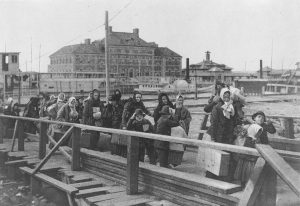 people had to sleep on the floor. Sometimes, children came over alone. Their parents were dead, and they were sent to live with relatives or maybe to be adopted. Sometimes they were on Ellis Island for months…so long in fact that a playground was build so they could play. A school was started because they needed an education. And sometimes children had to be sent back alone or with a parent if they had one. Some people were rejected. It was part of the process. It was hard…on everyone, but the reward was a better life, if they were accepted. It was tough, and still, they came. They knew it was worth it. The nation has always accepted immigrants. We just expect them to do so legally. The process is difficult, but it is worth it.
people had to sleep on the floor. Sometimes, children came over alone. Their parents were dead, and they were sent to live with relatives or maybe to be adopted. Sometimes they were on Ellis Island for months…so long in fact that a playground was build so they could play. A school was started because they needed an education. And sometimes children had to be sent back alone or with a parent if they had one. Some people were rejected. It was part of the process. It was hard…on everyone, but the reward was a better life, if they were accepted. It was tough, and still, they came. They knew it was worth it. The nation has always accepted immigrants. We just expect them to do so legally. The process is difficult, but it is worth it.
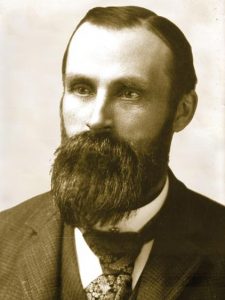 What would the modern farm be without the tractor? People in the 19th century knew exactly what it would be, even if they had no idea what a tractor was. John Froelich was born on November 24, 1849, in Iowa. His life would end up changing much in the agricultural industry. As an adult, Froelich operated a grain elevator and mobile threshing service. His job was to bring a crew to local farms every year at harvest time. He hired a crew and dragged a heavy steam-powered thresher through Iowa and the Dakotas, threshing farmers’ crops for a fee. I suppose it was a good way to make a living, but his machine was bulky, hard to transport, and expensive to use. To top it off, it was also dangerous…one spark from the boiler on a windy day, and he could find the whole prairie ablaze.
What would the modern farm be without the tractor? People in the 19th century knew exactly what it would be, even if they had no idea what a tractor was. John Froelich was born on November 24, 1849, in Iowa. His life would end up changing much in the agricultural industry. As an adult, Froelich operated a grain elevator and mobile threshing service. His job was to bring a crew to local farms every year at harvest time. He hired a crew and dragged a heavy steam-powered thresher through Iowa and the Dakotas, threshing farmers’ crops for a fee. I suppose it was a good way to make a living, but his machine was bulky, hard to transport, and expensive to use. To top it off, it was also dangerous…one spark from the boiler on a windy day, and he could find the whole prairie ablaze.
Froelich knew that this was no way to do business. He decided that he had to try something new. In 1890, instead of that cumbersome, hazardous steam engine, Froelich came up with the idea of a gas powered engine. The size comparison alone made it a far superior choice. So, he and his blacksmith mounted a one-cylinder gasoline engine on his steam engine’s running gear and set off for a nearby field to see if it worked. To their excitement, it did. The tractor 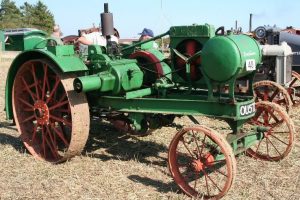 Traveled at a speed of three miles per hour. Of course, that was going to take them a long time to go from one location to another. The real test came when they took their new machine on the road for the annual threshing season. The good news is that the machine was a success there too. The crew threshed more than a thousand bushes of grain every day, 72,000 bushels in all, and they used only 26 gallons of gasoline. Of even greater importance, was that they did the whole thing without one fire.
Traveled at a speed of three miles per hour. Of course, that was going to take them a long time to go from one location to another. The real test came when they took their new machine on the road for the annual threshing season. The good news is that the machine was a success there too. The crew threshed more than a thousand bushes of grain every day, 72,000 bushels in all, and they used only 26 gallons of gasoline. Of even greater importance, was that they did the whole thing without one fire.
It was time to take the project to the next level. Froelich found eight investors, and they formed the Waterloo Gasoline Traction Engine Company. They built four prototype tractors and sold two. Unfortunately, both were soon returned. Rather than lose the company, and to make money, the company branched out into stationary engines. That was somewhat more successful and its first engine powered a printing press at the Waterloo Courier newspaper. Froelich was happy 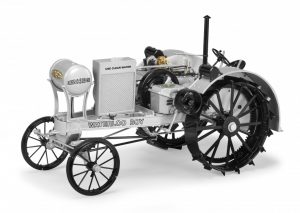 with the success, but that was really not where his interests were. He was into farming equipment and wanted to make an engine that worked for that. So he left the company in 1895. Froelich might have jumped the gun a little bit, because Waterloo kept working on its tractor designs. The designs still weren’t wildly successful, and between 1896 and 1914, Waterloo sold just 20 tractors in all. Success finally came when in 1914, the company introduced its first Waterloo Boy Model “R” single-speed tractor, which sold very well…118 in 1914 alone. The next year, its two-speed Model “N” was even more successful. In 1918, the John Deere plow-manufacturing company bought Waterloo for $2,350,000.
with the success, but that was really not where his interests were. He was into farming equipment and wanted to make an engine that worked for that. So he left the company in 1895. Froelich might have jumped the gun a little bit, because Waterloo kept working on its tractor designs. The designs still weren’t wildly successful, and between 1896 and 1914, Waterloo sold just 20 tractors in all. Success finally came when in 1914, the company introduced its first Waterloo Boy Model “R” single-speed tractor, which sold very well…118 in 1914 alone. The next year, its two-speed Model “N” was even more successful. In 1918, the John Deere plow-manufacturing company bought Waterloo for $2,350,000.
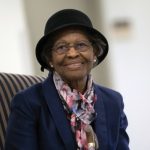 I liked Mathematics in school and I was pretty good at it, but I can’t say that I had the mind of a great mathematician. As to being able to invent something, or create something of great mathematical value, I don’t know if my mind worked in that direction. The really great inventions take an extraordinary mind…one like that of Gladys Mae West (née Brown), an American mathematician who was known for her contributions to the mathematical modeling of the shape of the Earth, and her work on the development of the satellite geodesy models that were eventually incorporated into the Global Positioning System (GPS). I doubt if anyone alive today can say they don’t know about GPS. It has been a fundamental part of life since 1973, although most of us knew nothing about it then.
I liked Mathematics in school and I was pretty good at it, but I can’t say that I had the mind of a great mathematician. As to being able to invent something, or create something of great mathematical value, I don’t know if my mind worked in that direction. The really great inventions take an extraordinary mind…one like that of Gladys Mae West (née Brown), an American mathematician who was known for her contributions to the mathematical modeling of the shape of the Earth, and her work on the development of the satellite geodesy models that were eventually incorporated into the Global Positioning System (GPS). I doubt if anyone alive today can say they don’t know about GPS. It has been a fundamental part of life since 1973, although most of us knew nothing about it then.
West was born in 1930 in Sutherland, Virginia, south of Richmond. Her family was an African-American farming family in a community of sharecroppers. Her mother worked at a tobacco factory, and her father was a farmer, who also worked for the railroad. West knew she did not want for follow in her parents’ footsteps, and she knew that the only way out was to get a really good education. Family money was not going to be her way to college, so she knew she would need scholarships. Fortunately, the high school she attended gifted the top two students each year with a full-ride scholarship to Virginia State College (University at that time), a historically black public university. West worked hard and graduated in 1948 with the title of valedictorian. With the goal of graduating as one of the top two students behind her, West was a little unsure of just what to do next. She had never given much thought to what she would study…if she got to go to college, but she really had her pick, because she had excelled in all of her courses. Her teachers and counselors encouraged her to major in science or math because of their difficulty. West chose to study mathematics, a normally male dominated subject at her college. She also became a member of the Alpha Kappa Alpha sorority. In 1952, she graduated with a Bachelor of Science in Mathematics. Following her graduation, West taught math and science at Waverly, Virginia for two years. Then returned to VSU to complete her Master of Mathematics degree. She graduated in 1955, and briefly took another teaching position in Martinsville, Virginia.
Her big break came in 1956 when she was hired to work at the Naval Proving Ground located in Dahlgren, Virginia. These days it’s called the Naval Surface Warfare Center. West started her job as the second black woman ever hired and one of only four black employees. West was a programmer in the Naval Surface Warfare Center Dahlgren Division for large-scale computers and a project manager for data-processing systems used in the analysis of satellite data. While she was working there, she was also in the process of earning a second master’s degree in public administration from the University of Oklahoma.
West was dedicated to her work. In the early 1960s, she participated in an award-winning astronomical study that proved the regularity of Pluto’s motion relative to Neptune. She also began to analyze data from satellites, putting together altimeter models of the Earth’s shape. She became project manager for the Seasat radar altimetry project, the first satellite that could remotely sense oceans. West consistently put in extra hours, cutting her team’s processing time in half. This extra time spent, earner her a commendation in 1979.
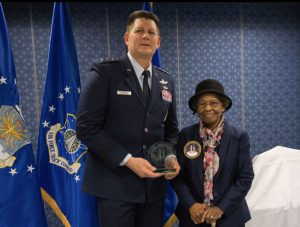
In the mid-1970s she began working on an IBM computer to deliver increasingly precise calculations to model the shape of the Earth…an ellipsoid with irregularities, known as the geoid. She generated an extremely accurate model which required her to employ complex algorithms to account for variations in gravitational, tidal, and other forces that distort Earth’s shape. West’s data ultimately became the basis for the Global Positioning System (GPS), which we all know about today. She was inducted into the United States Air Force Hall of Fame in 2018. Today, West lives quietly with her husband, Ira. They have 3 children and 7 grandchildren.
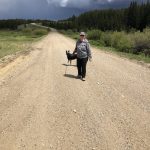
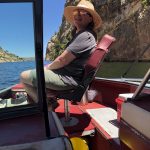 My niece, Kelli Schulenberg is an outdoorsy girl who loves pretty much everything about nature. She is very into sports like hiking, skiing, biking, snowshoeing, and camping. She and my nephew, Barry Schulenberg have been doing a lot of camping, taking trips to the Big Horn Mountains, the Black Hills, and Alcova Lake, where they enjoy boating too. They take their bikes and do a lot of trail riding or hiking the trails in the area. Their dog, Scout rounds out their hiking and biking group most of the time, although, Kelli’s mom, Mary Wages joins them sometimes as well…especially this year, when Mary was forced to evacuate her summer camping site in Colorado, due to the wildfires there. Kelli and Barry were relieved that she was safe here with them. Having a parent in harm’s way would be an awful situation.
My niece, Kelli Schulenberg is an outdoorsy girl who loves pretty much everything about nature. She is very into sports like hiking, skiing, biking, snowshoeing, and camping. She and my nephew, Barry Schulenberg have been doing a lot of camping, taking trips to the Big Horn Mountains, the Black Hills, and Alcova Lake, where they enjoy boating too. They take their bikes and do a lot of trail riding or hiking the trails in the area. Their dog, Scout rounds out their hiking and biking group most of the time, although, Kelli’s mom, Mary Wages joins them sometimes as well…especially this year, when Mary was forced to evacuate her summer camping site in Colorado, due to the wildfires there. Kelli and Barry were relieved that she was safe here with them. Having a parent in harm’s way would be an awful situation.
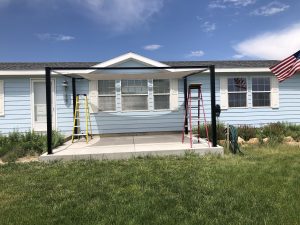
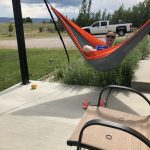 All that exercise can make the downtime very important. Some people have a hot tub, but Kelli and Barry decided to buy a dry sauna for their house last winter. Winter isn’t Kelli’s favorite time of year, so having a dry sauna at the house must be just like Heaven to her. Kelli has already used it a few times this year. I think I’m jealous. Kelli and Barry have a place in the country, and it is their sanctuary. In the summer of 2019, Barry put up a sun shade at their house, and bought a hammock to hang from the sun shade frame. Kelli has been enjoying both a lot. The hammock is a great place to read a book or just relax. Kelli works hard and plays hard, so being able to relax is a really important part of life.
All that exercise can make the downtime very important. Some people have a hot tub, but Kelli and Barry decided to buy a dry sauna for their house last winter. Winter isn’t Kelli’s favorite time of year, so having a dry sauna at the house must be just like Heaven to her. Kelli has already used it a few times this year. I think I’m jealous. Kelli and Barry have a place in the country, and it is their sanctuary. In the summer of 2019, Barry put up a sun shade at their house, and bought a hammock to hang from the sun shade frame. Kelli has been enjoying both a lot. The hammock is a great place to read a book or just relax. Kelli works hard and plays hard, so being able to relax is a really important part of life.
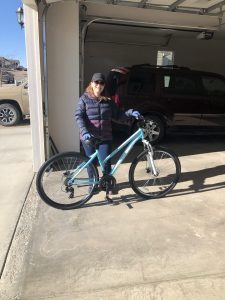

Recently, Kelli’s bicycle met with an unfortunate end, when it fell over in the garage and made its last brave stand against the wheel of Kelli’s vehicle, which was too tall for her to see the bicycle laying in her path. It was a really sad day for Kelli, because she loves to ride her bicycle. Barry felt so bad for her, but it gave him and his mother, Jennifer Parmely a great idea for Kelli’s birthday gift, so they looked them over and picked out a pretty blue bicycle for Kelli, which she was given this morning. She loves the new bike, and has already taken it for a spin, thanks to our having no snow at the moment. Today is Kelli’s birthday. Happy birthday Kelli!! Have a great day!! We love you!!

